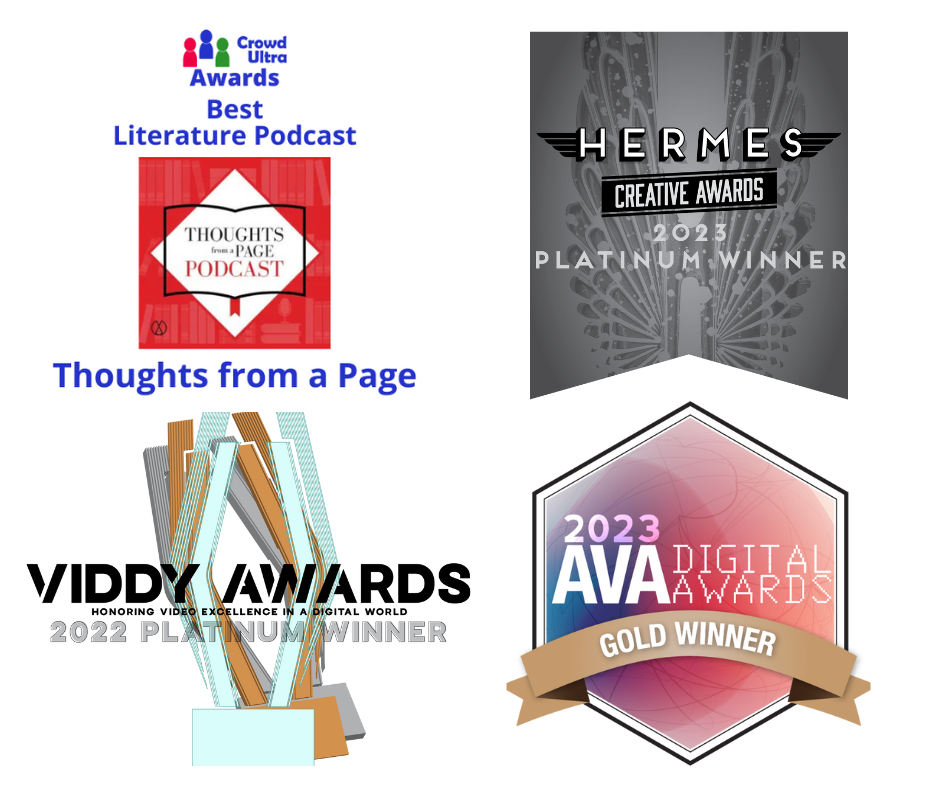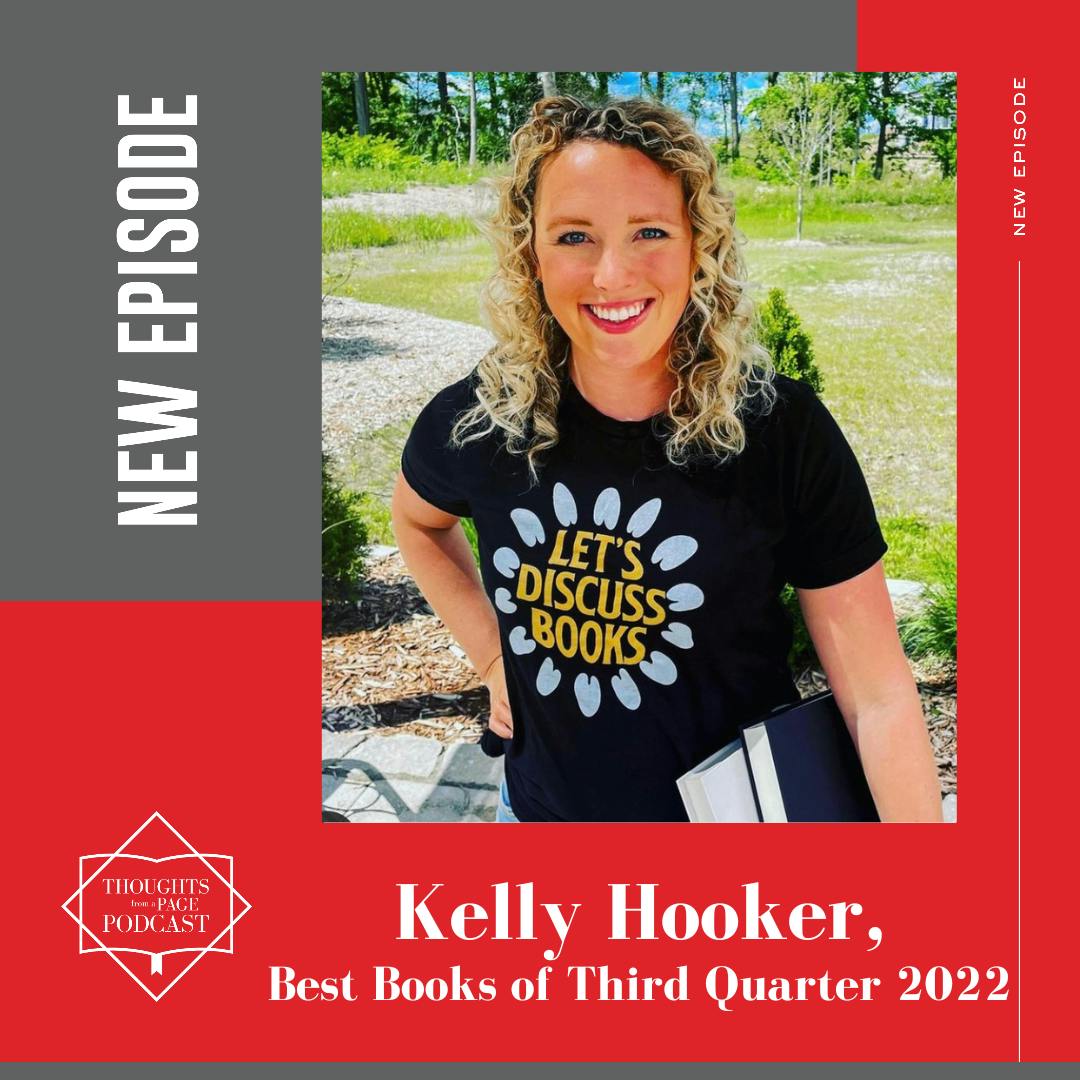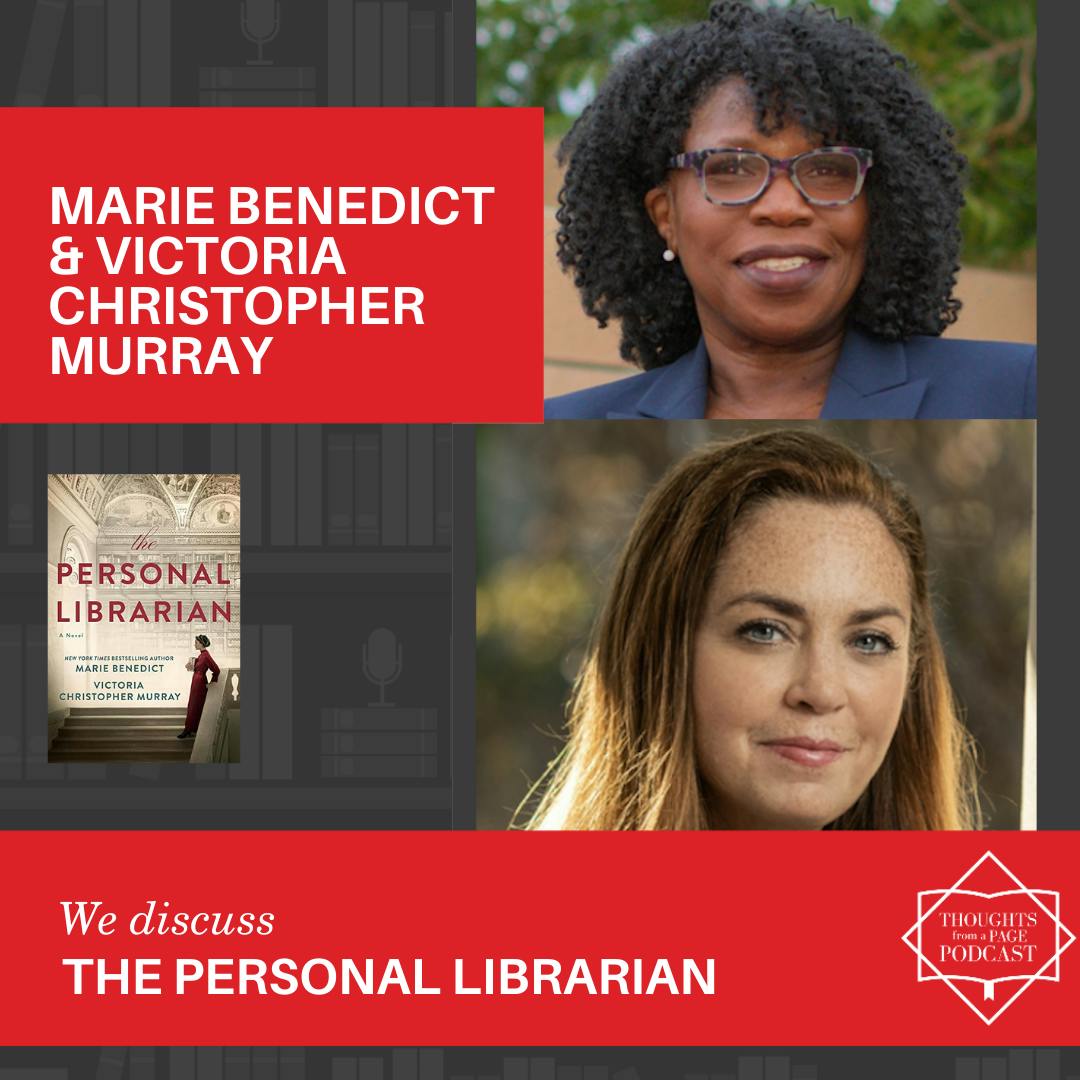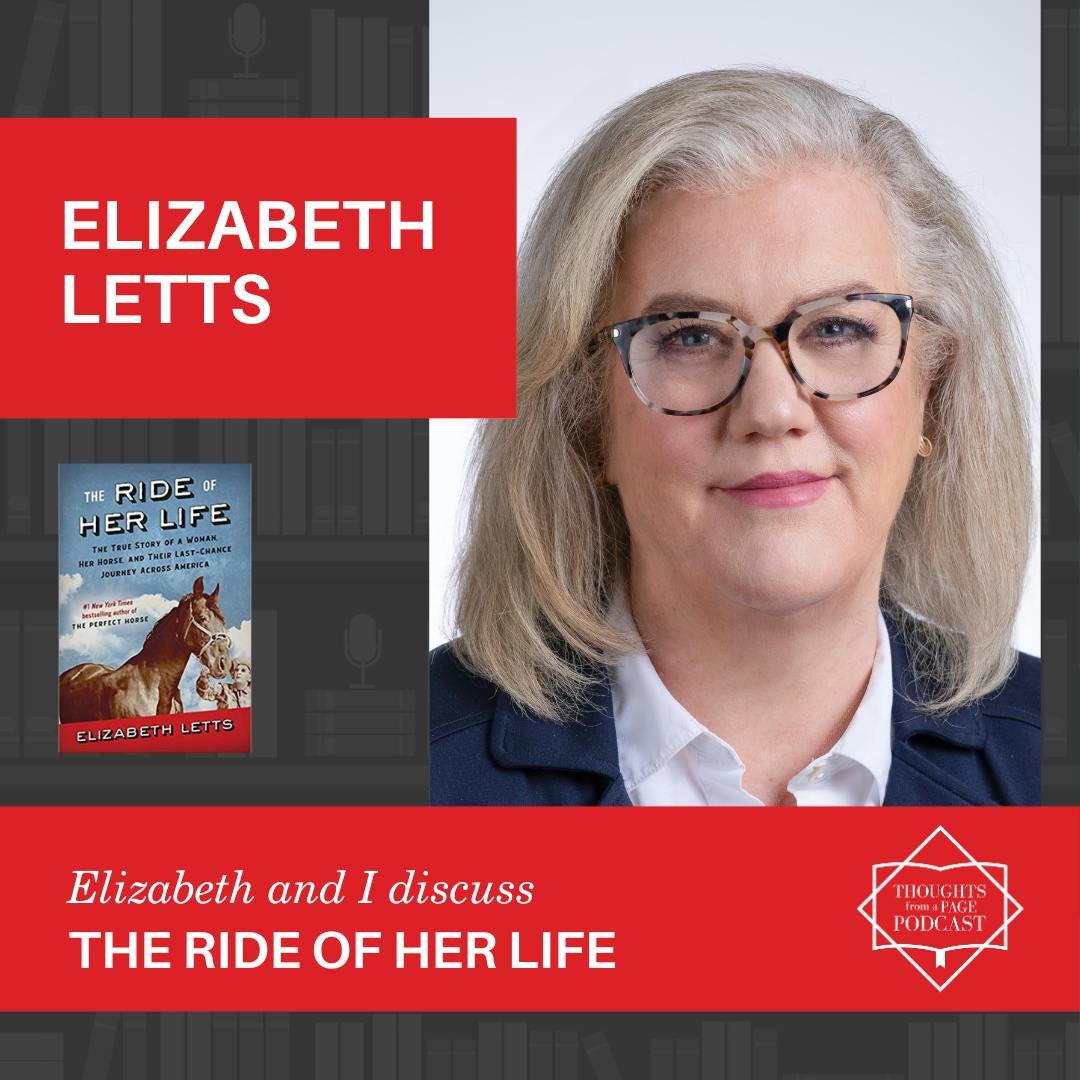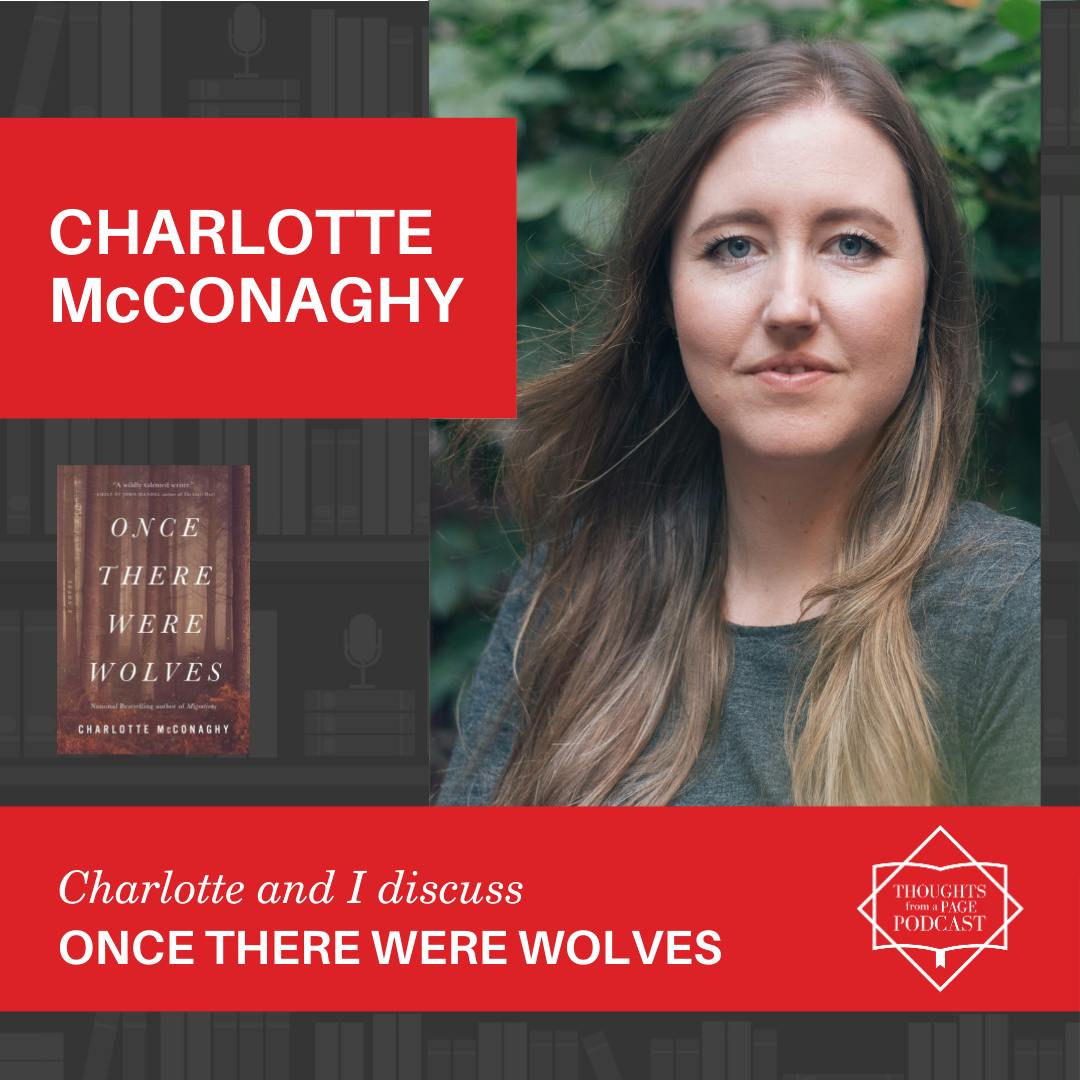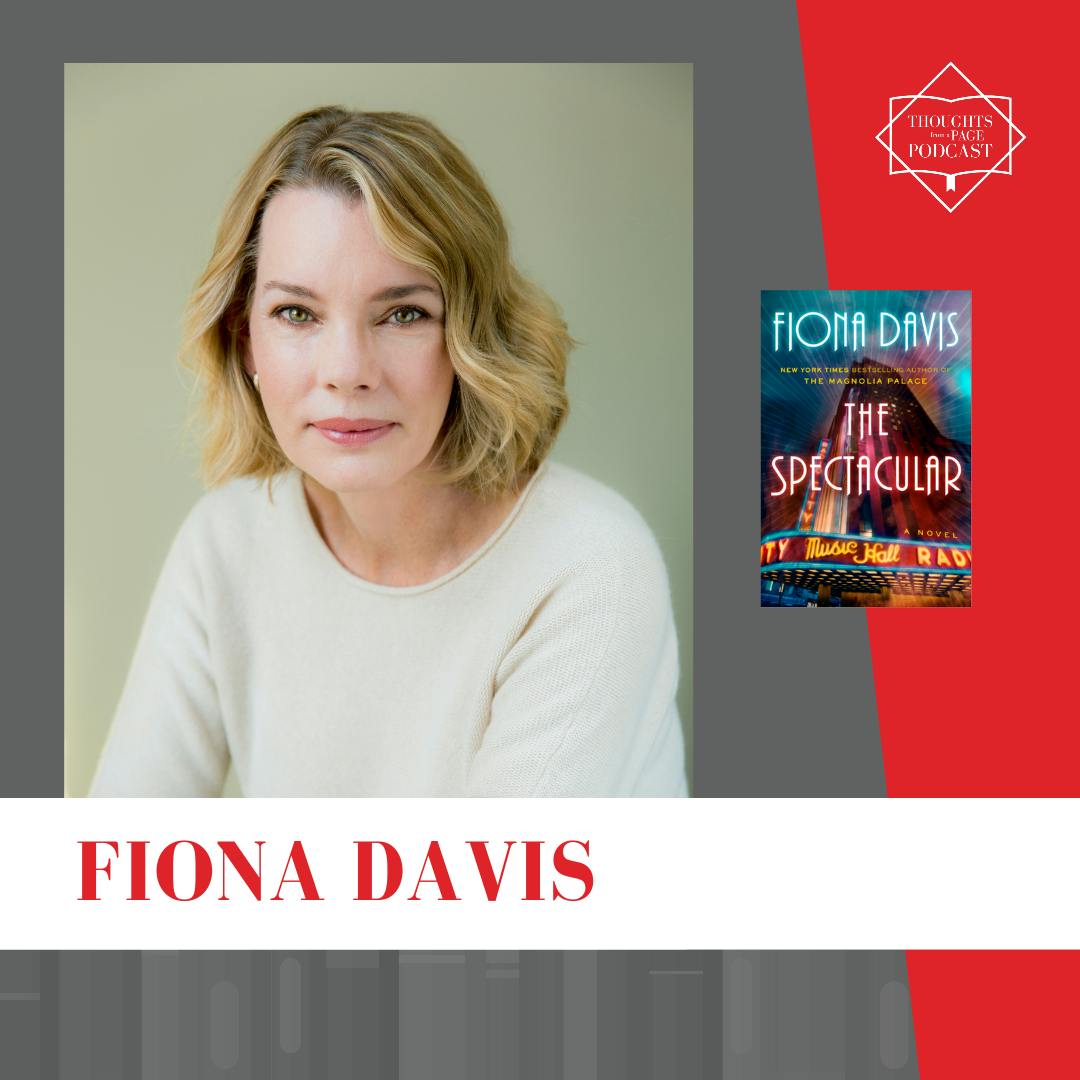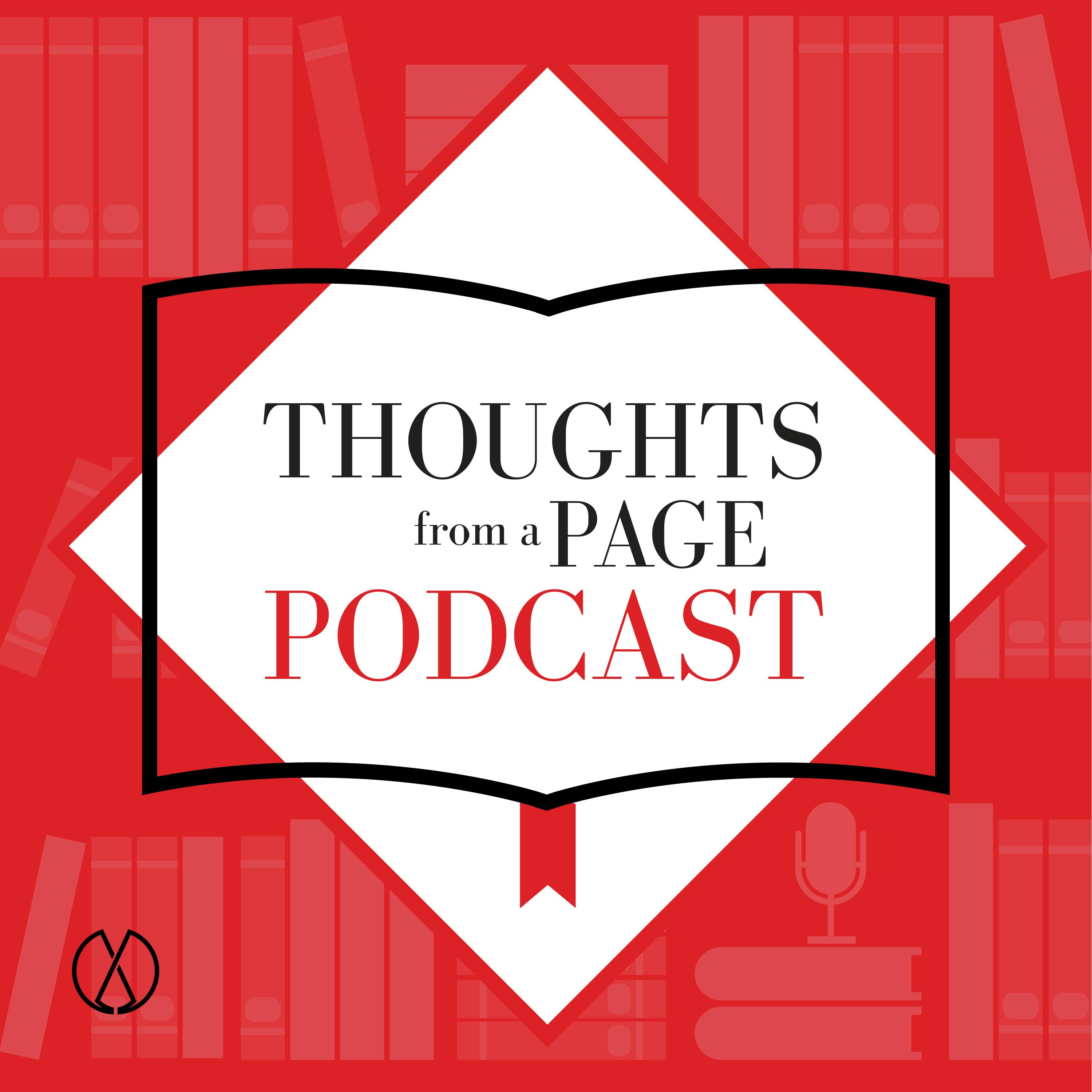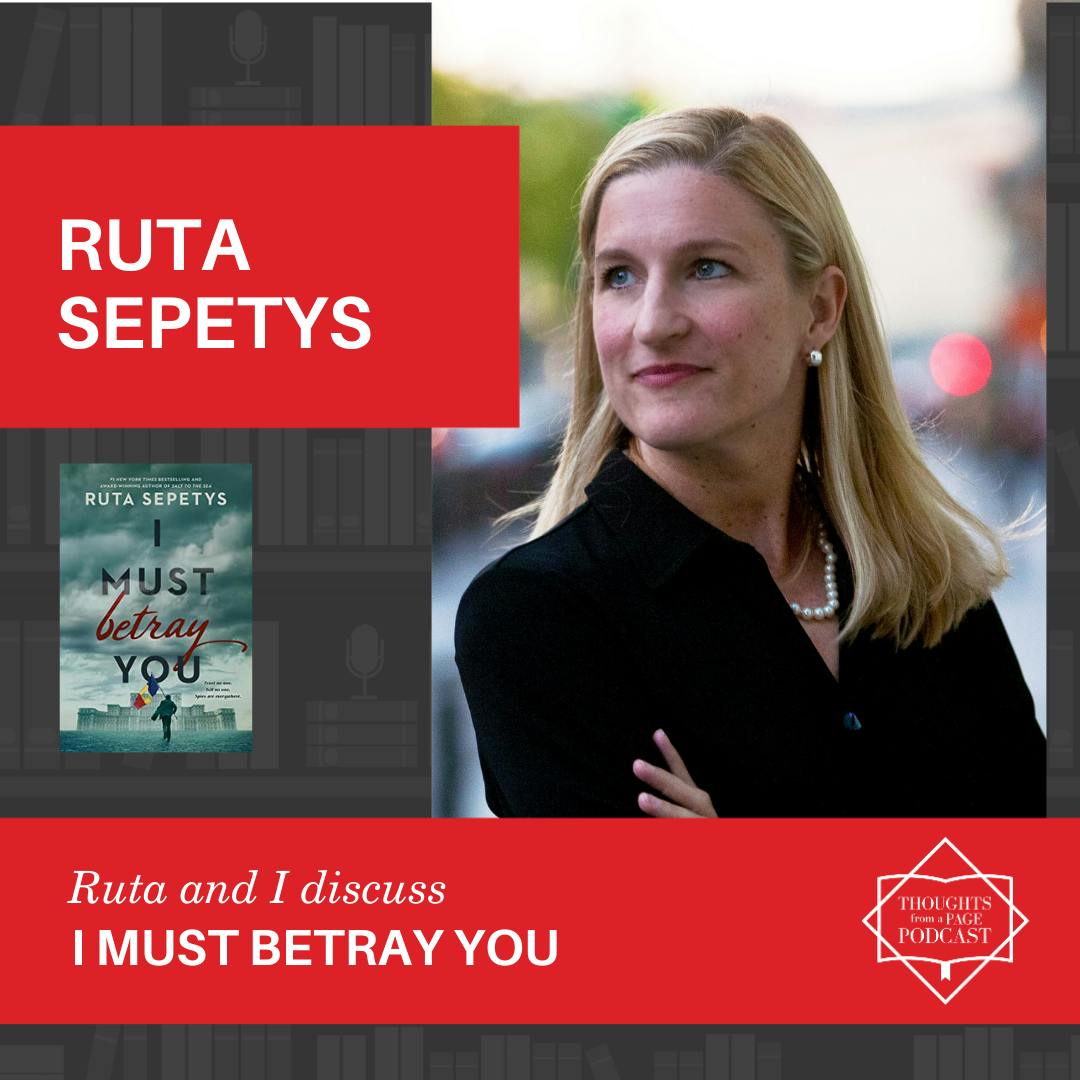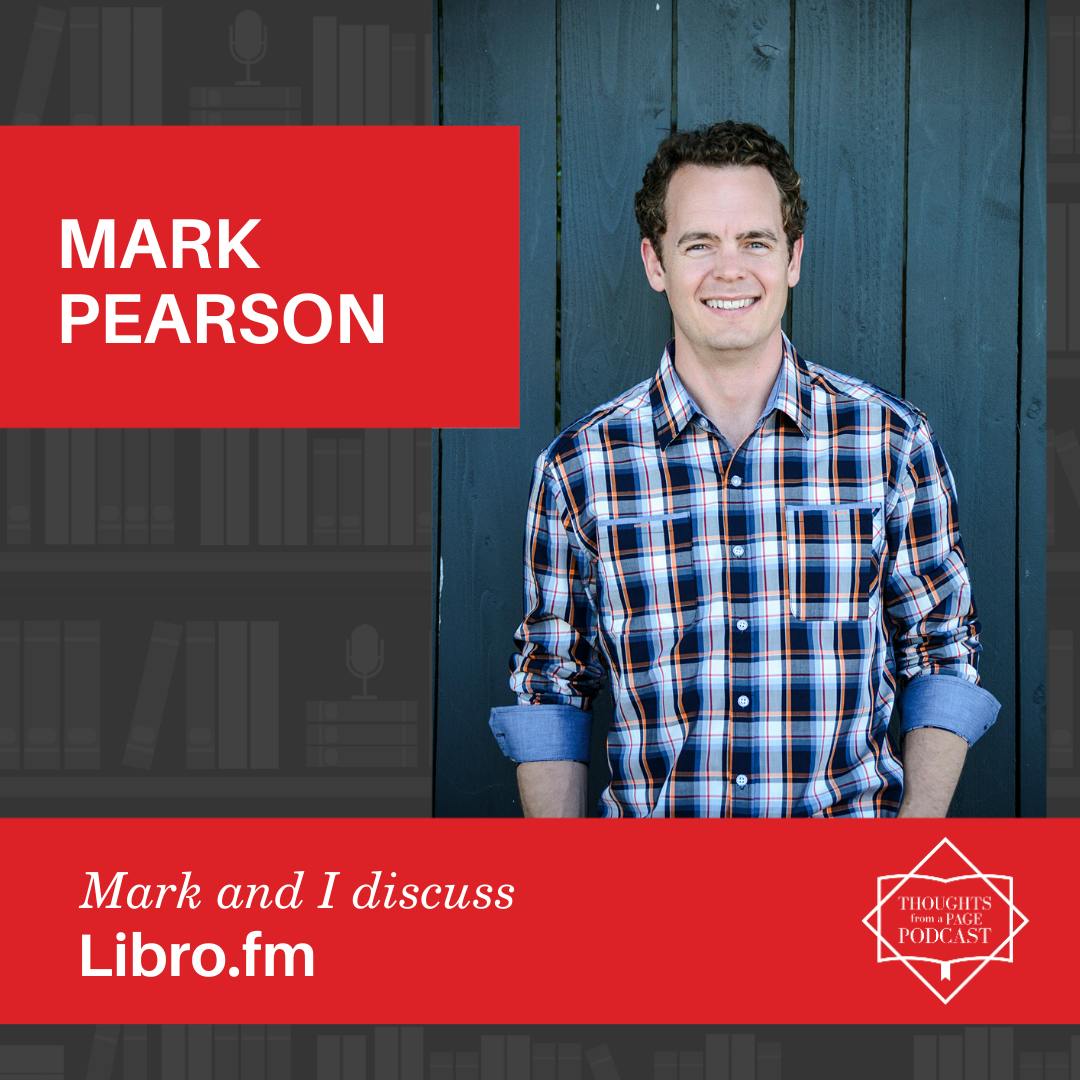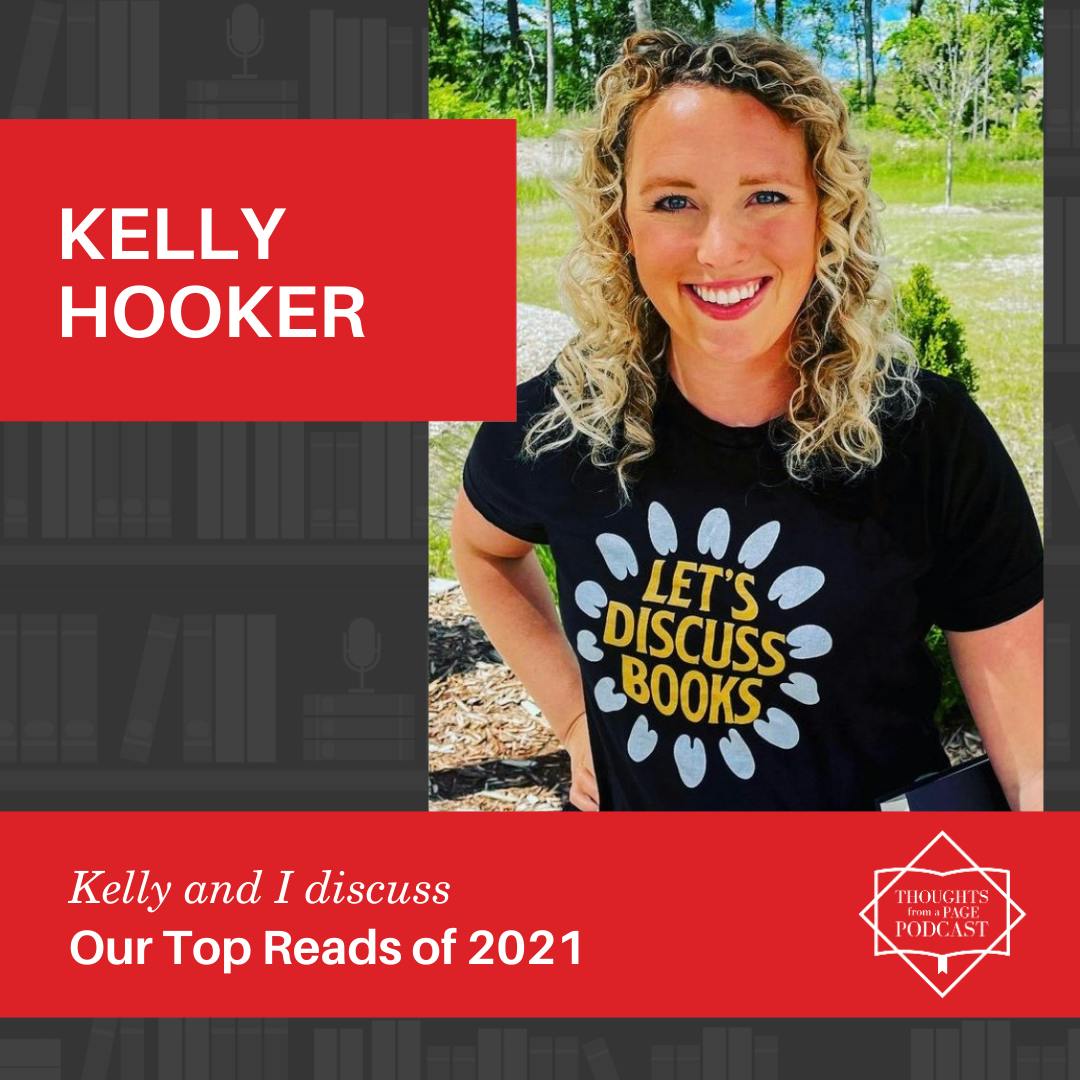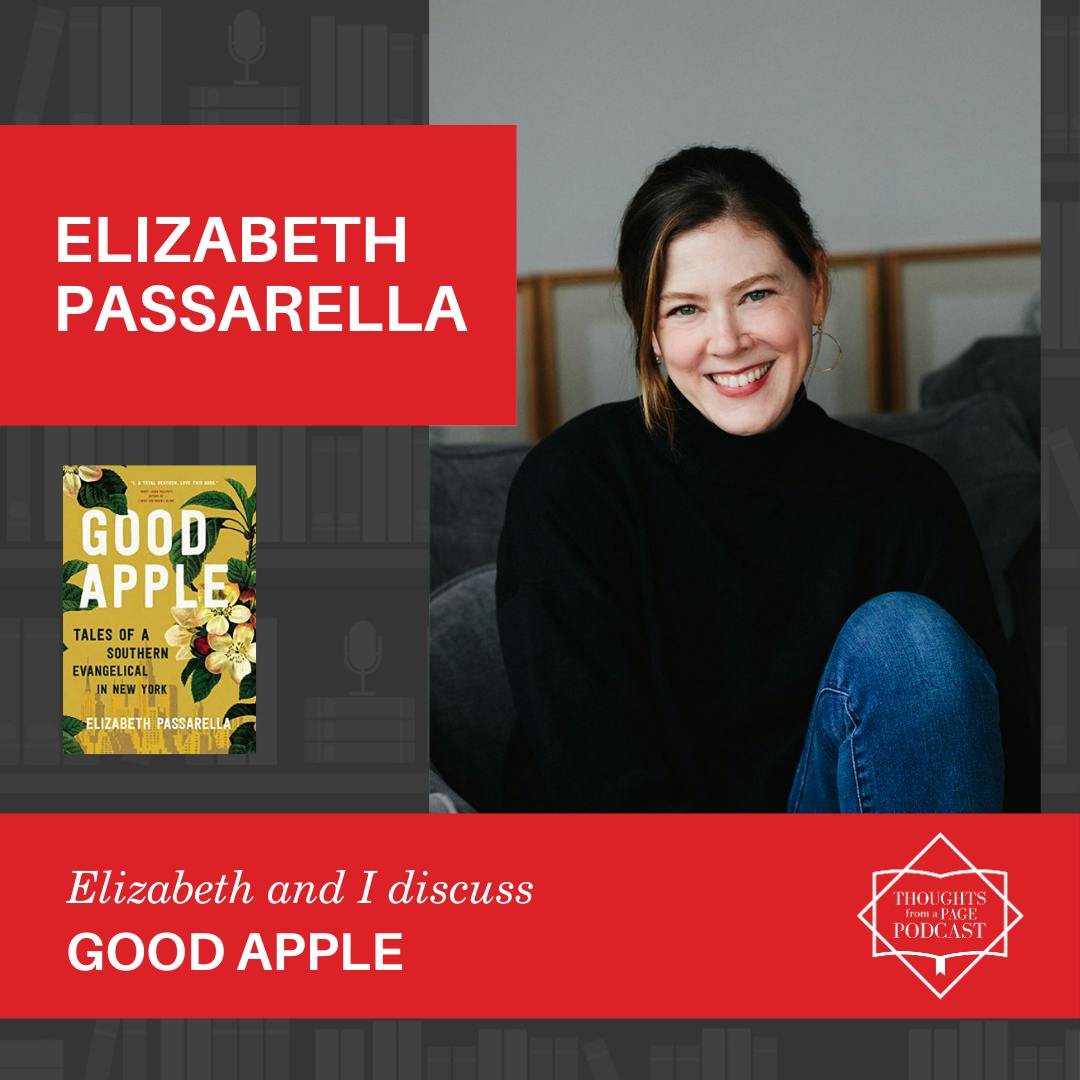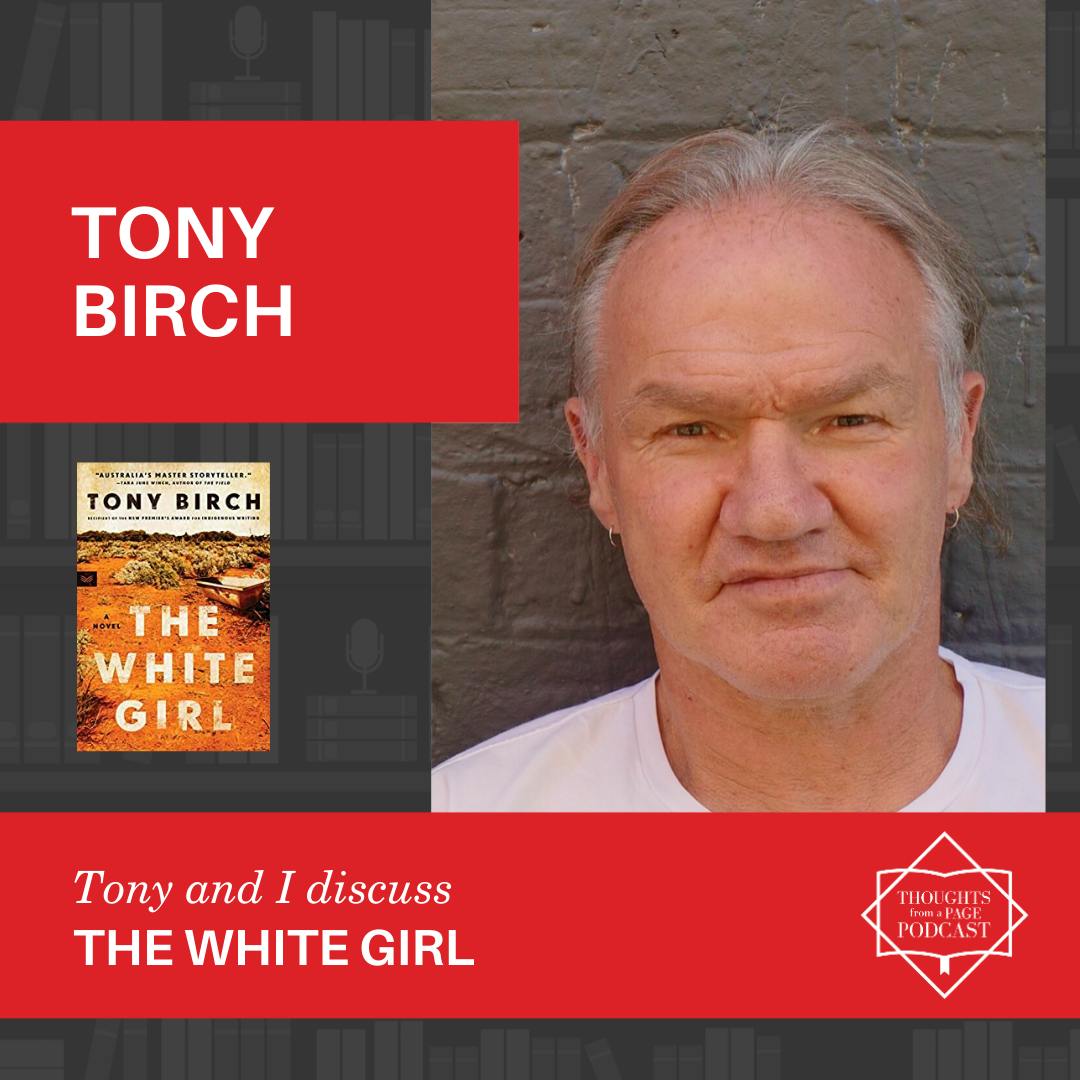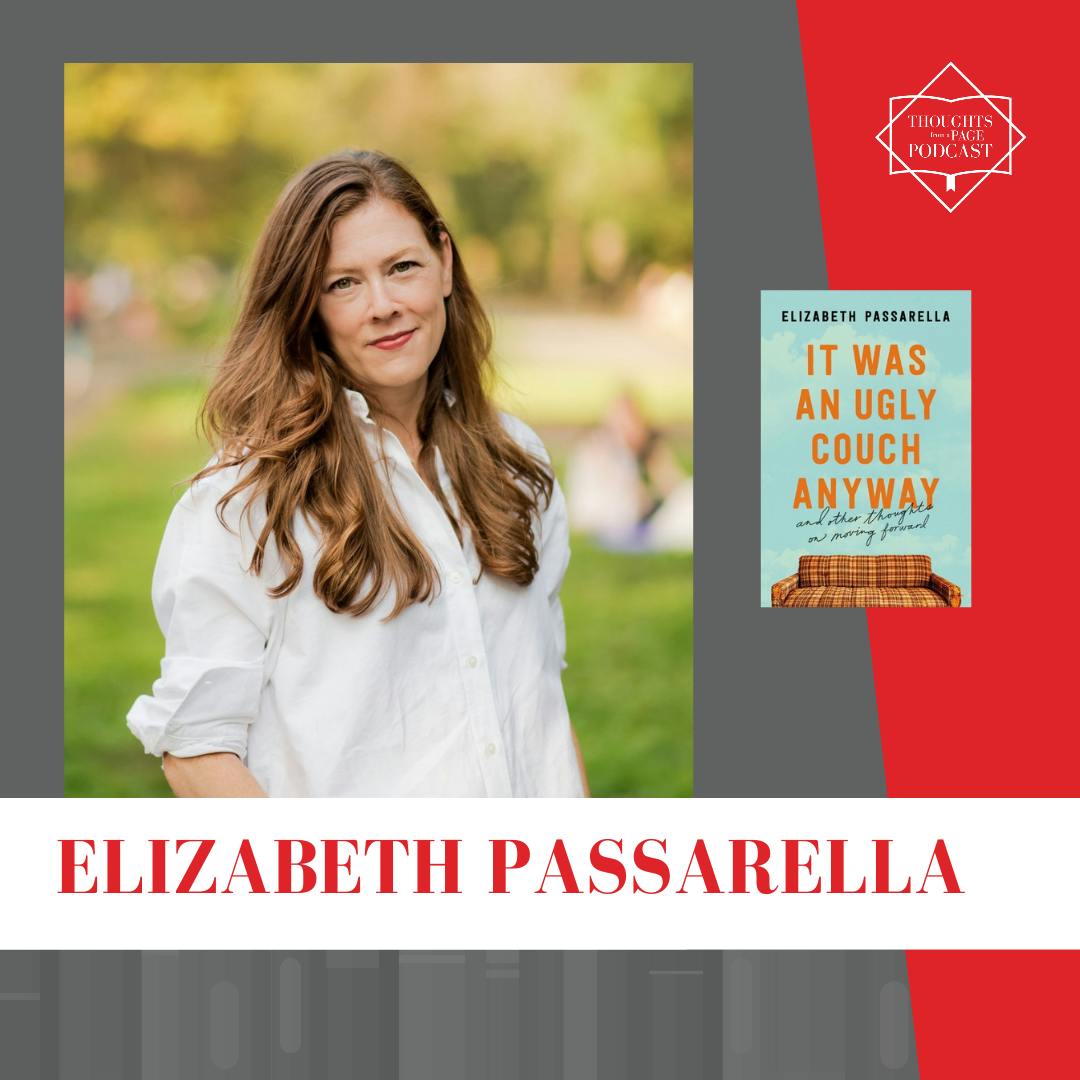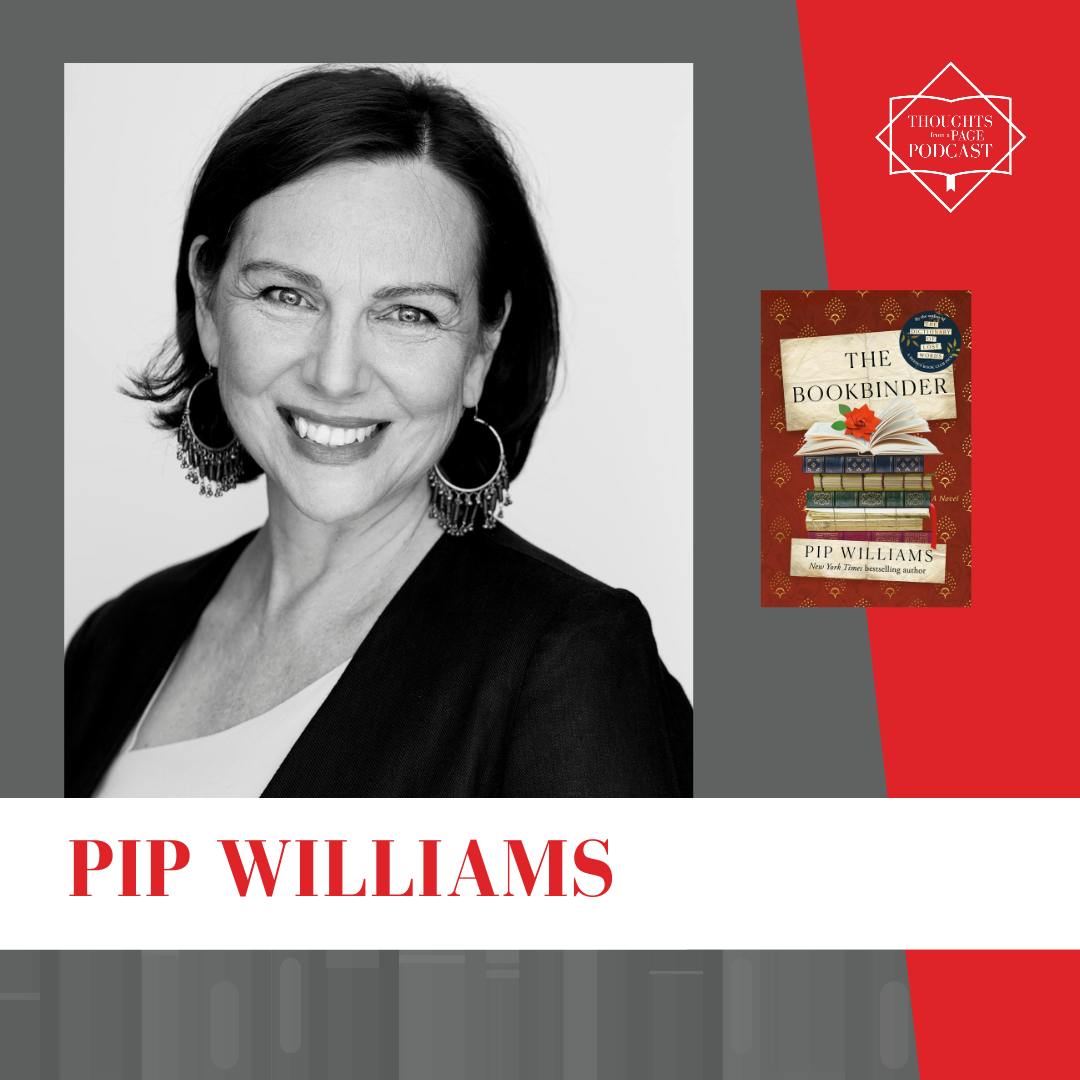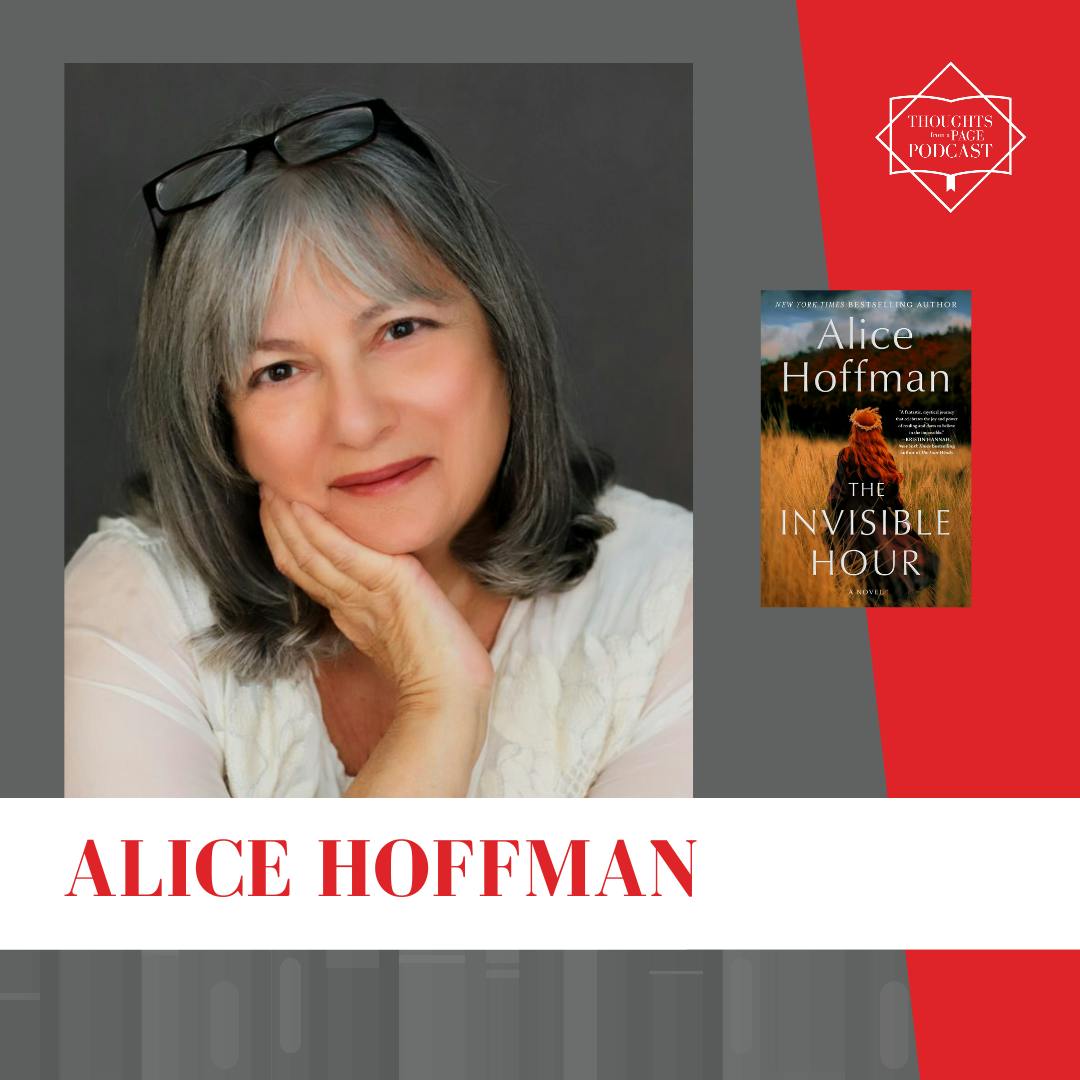
In this interview, Lynn and I discuss The Woman With the Cure, writing a book about the polio pandemic during another pandemic, how our culture is dictated by advertisements, her research, her goal to present the science necessary in the book in a basic and readable format, the creation of Candyland, and much more.
In this interview, Lynn and I discuss The Woman With the Cure, writing a book about the polio pandemic during another pandemic, how our culture is dictated by advertisements, her research, her goal to present the science necessary in the book in a basic and readable format, the creation of Candyland, and much more.
Lynn's recommended reads are:
- Lessons in Chemistry by Bonnie Garmus
- The Marriage Portrait by Maggie O'Farrell
- Shrines of Gaiety by Kate Atkinson
My Read-Alike Request Recommendations for The Lost Book of Eleanor Dare by Kimberly Brock:
- Time's Undoing by Cheryl Head
- The Lady in the Lake by Laura Lippman
- The Cottingley Secret by Hazel Gaynor
- The Secret Book of Flora Lea by Patti Callahan Henry
Support the podcast by becoming a Page Turner on Patreon. Other ways to support the podcast can be found here.
The Woman With the Cure can be purchased at my Bookshop storefront.
Ask Me Anything question for me for April's episode? Submit it here.
Want to submit a Read-Alike Request for the podcast? Submit it here.
Connect with me on Instagram, Facebook, and Twitter.
Learn more about your ad choices. Visit megaphone.fm/adchoices
[00:10] Cindy: Welcome to the award winning Thoughts from a Page podcast, a member of the Evergreen Podcasts Network hosted by me, Cindy Burnett, a voracious reader and book columnist who provides you with casual author conversations, book recommendation episodes, and insider information on all of the newest releases that I have read and endorse, and on the publishing industry in my behind the scenes series. With so many books coming out weekly, it can be hard to decide what to read, so I find the best ones and share them with you. For more book recommendations or to find my backlist of interviews, visit my website at thoughtsfromappage.com. In 2023, I have a new segment on my Tuesday episodes called Read Alike Requests. Listeners can submit a book they loved and tell me why they loved it, and I will suggest some similar reads. There is a Google Form included in today's show notes if you would like to send in a request. If you love to read, I hope you will consider joining my Patreon group to access additional content, including bonus episodes and early reads with pre-pub author chats. For March, there are two books. Colleen Oakley's new book, The Mostly True Story of Tanner and Louise and Fifth Avenue Glamour Girl by Renee Rosen. And for April, my selection is The Comeback Summer by writing duo Ali Brady. The link to join is in the Show Notes.
Today I am chatting with Lynn Cullen about The Woman With the Cure. Lynn grew up in Fort Wayne, Indiana, and is the bestselling author of The Sisters of Summit Avenue, Twain's End and Mrs. Poe, which was named an NPR 2013 Great Read and an Indie Next List Selection. She lives in Atlanta with her husband, their dog and two cats. I hope you enjoy our conversation.
And now for this week's Read Alike Request segment. While every book is unique and stands alone, certain elements of books we love really stick with us. And that is what I want to tap into the aspects of the book that appealed to the requester and to focus on finding those elements in other books. Today's request is from Jayda, who is @thehistorymom on Instagram, and she selected The Lost Book of Eleanor Dare by Kimberly Brock. What happened to the Lost Colony of Roanoke remains a mystery, but Brock decides to imagine a story based on Eleanor Dare and her descendants. Jayda enjoyed the book because she found it to be a fascinating historical mystery. It was atmospheric and had a great sense of place, plus it had rich historical detail. She would like to find more historical fiction books that have a puzzle at their heart. I love historical fiction, so I'm always happy when somebody's asking for a read alike in that genre. My first recommendation is Time’s Undoing by Cheryl Head, which comes out next week. Time’s Undoing is about a young Black journalist search for answers in the unsolved murder of her great-grandfather in segregated Birmingham, Alabama decades ago, and it is inspired by the author's own family history. It is a dual timeline narrative that takes place mainly in Birmingham in 1929 and 2019, and Head really brings the city to life in both time periods. I truly felt like I was transported to Birmingham, and I learned so much about the city both then and now. There is a mystery at the heart of the story, and the way the tale unfolds is just so well done. I think it is a great Read Alike for The Lost Book of Eleanor Dare. My next recommendation is Lady in the Lake by Laura Lippman, a story set in 1960s Baltimore amid the social turmoil and strife of the era. Lippman's tale unfolds through the perspective of numerous characters, each chapter tied to some small portion of the last chapter as the main character slowly works to solve a cold case. This is another book with an incredibly strong sense of place, something Jayda enjoyed about The Lost Book of Eleanor Dare, and it also contains a mystery at the heart of the story. Both the book's format and the mystery’s resolution are really creative. The last book I am recommending as a Read Alike is The Cottingley Secret by Hazel Gaynor. Gaynor turns the clock back 100 years to a time when two young girls from Cottingley, Yorkshire convinced the world that they had done the impossible and photographed fairies in their garden. I have always been completely fascinated with the actual events upon which this book is based, and Gaynor does a wonderful job of reimagining their tale. This is a great Read Alike for Eleanor Dare because both authors base their stories on historical events with puzzles at the heart of them, and The Cottingley Secret is another book with a very strong sense of place and time. Before I finish, I want to quickly mention a few others. Patti Callahan Henry has a new book coming out in May entitled The Secret Book of Flora Lea, which is also a great Read Alike for Eleanor Dare, about two sisters who are separated during World War II and the mystery that surrounds one of them. There are also two historical mystery series that I want to highlight that both have strong settings the Maggie Hope series by Susan Elia MacNeal and the Maisie Dobbs series by Jacqueline Winspear. I think both of these fit Jayda's criteria very well, including being very atmospheric and full of rich historical detail. Thanks, Jayda, for submitting a Read Alike Request. and I hope you and everyone else enjoys these recommendations. And now on to my conversation with Lynn Cullen. Welcome, Lynn. How are you today?
[05:05] Lynn: I am great, thank you. How are you?
[05:08] Cindy: I'm doing well as well and I'm really looking forward to talking with you about The Woman With the Cure. For those that want to read it yet, I would love for you to give me a quick synopsis of The Woman With the Cure to start out.
[05:19] Lynn: The Woman With the Cure is about the race for the polio vaccine takes place mostly in the most people know about Salk and Sabin, the two doctors who are head to head fighting for the cure for the vaccine. But actually, there were a lot of influential women in the race, and I have singled in on the most important woman and fascinating woman, Dorothy Horstmann, and her role in beating polio.
[05:49] Cindy: And what a timely story, which we will talk about in just a little bit. But before we do that, I would love to hear how you learned about Dorothy Horstmann and then how you became invested enough in her story to write about it.
[06:00] Lynn: Well, I walk every Friday with a friend, Karen Torgali, who was at the time the oral historian for the CDC. And she was always telling me these cool stories about pioneers and epidemiology and public health people who changed the world. And the one story I really loved was about the race for the vaccine between Salk and Sabin. And these guys are terrible characters. They're each very eccentric and amusing in their own ways, and, of course, brilliant. But the whole time I was hearing this and thinking, well, one, I was thinking, I've got to write a story about this. This is so fascinating. But the other thought was, I have to do it from a woman's point of view. Where are the women? And actually, Karen didn't have much in the way of leads for me about a woman who could carry this story. So I had to do a lot of digging, and I got on the track of Dorothy Horstmann, really from just some online websites. There's very little about her in books. And I tracked her down. And when I looked up some pictures in Life magazine from 1944, she was instrumental in what was called the Miracle of Hickory, because this was a horrible outbreak in Hickory, North Carolina, and they quickly built a hospital, staffed it, and turned the outbreak around in, like, seven days time. So she was part of this. And this Life Magazine had these pictures of this very tall woman taking blood samples from children and hanging out in the tent. You know, they the people lived in tents. The doctors, I should say, lived in tents. And they also took in their admissions in tents, this very makeshift. And this woman kept appearing in it, this very tall woman, as I said, and that was Dorothy Horstmann. And just seeing her made me fall in love with her. And I found out that the reason she's in these pictures so much is she was part of the Yale Polio Study Group, which is actually just a flying unit that was sent around the world whenever there was a polio outbreak. So Dorothy was, like, the key person in this for several decades. And so she, maybe more than anyone else in the world, had this first-hand knowledge of what a polio epidemic looked like, what an outbreak looked like.
[08:26] Cindy: Definitely boots on the ground. I was fascinated that every time there was an outbreak, this group traveled to the outbreak. I guess that was something I didn't know and I wasn't familiar with, and I thought it was really interesting.
[08:39] Lynn: Yes, well, they were trying to figure out what caused it and how to contain it. And the real catch with polio is that it lasted about 40 years, started in 1916. The outbreaks began, and it was only in the summertime, though, that could be around the summer times around the world all year. Of course.
[09:00] Cindy: What I thought was really interesting was that you decided to write about the race for the polio vaccine just months before COVID hit. Was that just crazy to be trying to write this story while we're living through another pandemic?
[09:13] Lynn: I thought at first at least, that might be helpful in writing the book. I started the book before the outbreak began. In fact, I was sheltering in place that summer when I read that on December 31, 2019, is when it was announced to the who that there was this outbreak. That was the day I finally put pen to paper, the very first day I started writing the book. So that kind of freaked me out a little bit. That coincidence. But as far as writing about it, I thought, okay, this will show me how it felt. Because with polio, the only thing they had was isolation. And that's the only thing we had, was isolation. They didn't know how it worked, and we didn't know how COVID worked. So I could feel their fear and just imagine having that fear every summer for 40 years, and it actually got worse as the decades went on by the thousands of children and young adults, babies were paralyzed each summer, and thousands more were killed. So I could begin to understand their fear by living through it, but I would have rather not had that authenticity.
[10:36] Cindy: Well, of course not. I like the way you started the story during World War II, because that kind of threw me for a loop, because we obviously haven't lived during a time when polio was a problem or I haven't. So I don't ever think about it being any time but the 1950s. And of course, I knew it was because FDR contracted it in the 20s, so I just hadn't connected it all up. But I loved that you juxtapose the war and the polio and that they were both happening at the same time. Because I think sometimes when we look back at history and we read certain stories, you're just getting this tiny sliver of what's happening. And so I like that you put it in the context of the major event that was happening in the world.
[11:13] Lynn: Yes. And what actually forced that in my story structure is that Dorothy started her work in 1941. That's when she joined the Yale. Well, actually, I even start before that, when she was in medical school. So polio was yes, going on at that time. And I think that the research for polio really was set back by the war. All the main researchers were like the male researchers were sent overseas. Dorothy stayed home, stayed with the polio study unit. He kept on with that and cobbled together other jobs because so many men were overseas. But many of the sciences had to turn their labs and their work to diseases that were affecting the soldiers. So the war really set things back by five years, I'd say. Which is a pity, because as I mentioned, polio just got worse and worse with time, to the point where in the 50s there's only one thing more feared than polio, and that was nuclear war. And you know how everybody was in their little shelters and we had our air drills at school, air raid drills at school, and people were just as freaked out about paleo. Rightly. So because it affected children. That was the most cruel thing about it.
[12:43] Cindy: I think that's why I associate it with the 1950s, though, is because I think that's what you hear about how terrified people were. And I guess, as you said, it got worse over time. So by the was probably at its highest peak. Yes, but by the time I was around, you know, they had already come up with the vaccine and we were taking care of that. And so people didn't worry about polio anymore.
[13:05] Lynn: Right. And I'm anxious for this book to put polio on people's radar because it dropped off simply because we have the vaccine. If we didn't have it, it would still be haunting us in front page news. But the vaccine so completely took care of it. As long as people take the vaccine, it's taken care of. It was almost completely eradicated. But it's inching back a little bit because there's been a little easing up on people getting the vaccine. And that's a mistake because polio will take advantage of not having immunity to it.
[13:43] Cindy: Absolutely, yes. I think this antivaxxer movement has definitely harmed a variety of vaccines and diseases that are slowly inching back.
[13:52] Lynn: Yes, it's you know, when you have done the research that I've done and you see, you know, how people suffered oh, gosh, you just think people just don't realize what they're doing by rejecting this tool that we have.
[14:06] Cindy: I think that's exactly right. Well, let's talk about your research. You must have done an incredible amount of research to be able to write this book.
[14:13] Lynn: Well, it was extra tricky because it had all the science in it. And my goal was to present the science but completely stripped down to the most basic readable chunks because I'm not a scientist. So it was very difficult for me to consolidate all the facts and still have a really compelling story. I wanted to keep moving forward and people not to get lost in the weeds of the research. The research was also made more difficult when it came to just getting to know the people and places because during COVID I couldn't travel. I usually travel a lot when I do research for books. I have this thing about going to every setting of every scene in my books. I've traveled around the world to do that. It's sort of a game for me. Couldn't do that for this. So I relied upon Dorothy's story in places that I'd gone to. Like I had just been to Denmark the year before. That happened to be Dorothy's. One of her favorite places is Denmark. She spent a fair amount of time there. She was born where she grew up, rather in San Francisco. Well, I'm a bit familiar with that. And same for New York. I've spent a lot of time in New York, so I was fortunate to have these experiences since I couldn't go to the places.
[15:37] Cindy: I love Denmark so I was excited to see it in your book and I thought it was really interesting. Some of those other stories you wove in about Denmark and the characters. So that's one thing I love about historical fiction is you're learning something while you're reading a compelling story.
[15:53] Lynn: And that's what I love about writing it. Certain facts will pop up and I think, oh, I just really want to share this because this is really fun. That's another game for me, is how I can work things in, not interrupt the flow, but put in these fun tidbits that tickled me and I hope you know they'll amuse or entertain or instruct others.
[16:13] Cindy: Well, I love that. Was it hard to pare down all of this information you learned into your novel?
[16:19] Lynn: No, the hardest thing was just, again, getting the science pared down to the bare minimum so anybody could read it and not feel overwhelmed. But the story I followed Dorothy's story and that was my framework and made it easier for me to focus on the race just through her eyes. But even as I say that, I didn't focus just through her eyes did I had these other characters in there who I wanted to share the experiences of other women who were in the race. And they didn't always have obvious jobs in the race. They could just be the wife of the man who handled the lab animals, could be a secretary, could be Dorothy's mother. But everybody had their role in fighting polio, even. It was just supporting someone who was in the fight.
[17:17] Cindy: Well, and you mentioned this in your author's note afterwards but anytime you have a race for a cure or a scientific discovery, there's never one person working on it. There are so many and often several groups, competing groups. There are things that are built upon, such as Dorothy's discovery. So it must be hard to sort of channel all of that without making sure you haven't left out an important detail somewhere in the story. But also, there's probably a lot of people that just don't even get mentioned because you can't put it all into one book.
[17:47] Lynn: Right. And that is an important point. I'm glad you made that, because one thing that really bothers me is they call the oral polio vaccine the Sabin vaccine. They call the one that's injectable the salt vaccine as if one guy came down from the mountain with his flask after ten years of looking for it. Anyhow, no, there's huge teams of people, and then the people, as I was saying earlier, behind those people. It's a very broad effort.
[18:18] Cindy: It definitely is. And I thought that you really portrayed that well, because that can be difficult. It really reaffirmed to me that that is the case. And I always find that when I'm reading these science focused stories. And I love that because it really does take a village.
[18:31] Lynn: Yes, thank you. I'm glad that you've pointed that out. Thank you.
[18:36] Cindy: The other thing that I absolutely loved was that I didn't know that Candyland had been invented to entertain children hospitalized with polio.
[18:43] Lynn: Right, right. There were several things that came about because of polio. One thing I mentioned in there is the spraying for mosquitoes that was partly ordered. In fact, the timing of it is totally to do with polio. Right after the war, government airplanes and trucks were fitted up to blanket the world, the Us. I should say, at least in DDT. And I remember as a kid seeing these foggers going down the street, just blaring out all this toxic fog. And the kids, we played in it. We ran behind them because there's a cool mist. We played in that. And that came about because they were trying to get rid of mosquitoes, which they very early on, Dorothy's research pointed out that that didn't really stop polio. It killed the mosquitoes, but it did not affect polio transmission at all.
[19:42] Cindy: I'm so glad you mentioned that, actually, because it stuck out to me, because now we know DDT and its effects and would not want to be sprayed by it by any stretch of the imagination. And so I just thought that was really interesting as well. And it's just so fascinating to see how these things developed, that they were spraying for mosquitoes because they were worried about polio. But then also the DDT, and you mentioned where she steps in a DDT-laden puddle, and I'm like, oh, the whole time.
[20:13] Lynn: People just were not cognizant of the damage of these things. I think she was if you look at her report, she was leery about DDT, period. But and I did an aside, I don't know if she actually said this, but she's like, if why wouldn't they test on children first?
[20:35] Cindy: Thankfully, we have more safeguards in place now. And you talk about that as well, which I thought was interesting after the initial application of the Salk vaccine, where there were some complications because things weren't handled right by one of the manufacturers. The FDA put in a lot more stringent requirements. And so it was interesting to just see how some of these things developed.
[20:55] Lynn: Right. In fact, the FDA was really strengthened by polio with, as you mentioned, the mishap that happened with the Salk vaccine when it first came out. The FDA was really clamped down on drug trials, and in particular on immunizations. And that's why to this day, when people fear being harmed by an immunization, they should know that vaccines are the hardest thing to get through a trial. Through a drug trial. They almost, for a while, just couldn't get vaccines through. That's why Sabin had to test his in the USSR, because you couldn't even test the vaccine in the US after the Salk vaccine. But that was a really good thing to come out of the polio vaccine, is the strengthening of the FDA.
[21:49] Cindy: I thought that was so interesting, and I thought it was completely intriguing that they were able to go to the Soviet Union and dispense 67 million vaccines to children there. And I loved your commentary on the difference, or maybe it was a commentary in one of the reviewers. I think it was about how different it is when you're in a dictatorship versus a democracy, but that they were able to go and try the vaccine there.
[22:13] Lynn: Yes. And in fact, it's interesting. It was actually 77 million people sorry. Okay, well, it's a few million anyhow 77 million people took it, and in order to test the results of this 77 million person drug trial, biggest drug trial ever. I think it still is the biggest one to this day. Anyhow, this was the USSR, and so they were very closed at the time during the Cold War. And so they only allowed one person, one Western scientist, to go over there and evaluate this drug trial. And it was Dorothy Horstmann. This shows you the who appointed her. It shows you how respected, how she was the top of the field in polio. And so she went over there and went over all the lab work and everything in a few months’ time and pronounced that it was safe and effective. And so the children of the world afterward got that their sugar cube vaccine on her say. So essentially, some of us, like me, had these sugar cube vaccines, and we got it because Dorothy said it was.
[23:30] Cindy: Okay based on the 77 million kids in the USSR. I think that's the craziest story.
[23:37] Lynn: Yes. And there were young adults, too.
[23:38] Cindy: Okay.
[23:39] Lynn: That's how they got so many people.
[23:41] Cindy: Yes, but still, that's just pretty wild. Yes.
[23:44] Lynn: And one woman. One woman did all the evaluating.
[23:48] Cindy: Yeah, it is. It's just one of those things that's kind of mind boggling to think about.
[23:53] Lynn: Yes.
[23:54] Cindy: Well, you incorporate a number of advertisements directed to women and about women during the era that you're writing about. How did you decide to do that and why?
[24:02] Lynn: I always look at advertising in an era especially from really, the rise of advertising with the rise of radio in the 20s on. I talked about that in my last book, Sisters of Summit Avenue. It's fascinating to me how so much of our culture has really been dictated by advertising. We have our values that have been dictated to us to sell products. So that's why I included them in this book as well. It's products that kind of settle a lot about what was expected of women. By the way, I got these based on actual advertisements placed where I mentioned them. Like, one of them was in Time Magazine, one was in Life, and that one ad where it had a picture of a woman sitting at her vanity brushing her hair in her slip, and she was in ice, encased in ice. She was in this ice block, and it was supposed to advertise about how cool your bedroom could be if you got this air conditioner. But I just thought this is how they wanted women back then. They just wanted to put their women on ice. So the advertisements say so much, and that's why I wanted to slip them in.
[25:18] Cindy: They do say so much. And I'm so glad you mentioned The Sisters of Summit Avenue, because I loved that book, and that's how this one got on my radar, because once I like a book by an author, I'm always looking for what they're writing next. And so I was very happy when your name popped up attached to this one because I was like, oh, I loved her last book.
[25:34] Lynn: Oh, thank you. I'm so glad.
[25:37] Cindy: So what was the highlight of writing this book?
[25:38] Lynn: For me? I didn't even discover it until the end actually passed the end. I'd finished the book and was just thinking about it, and I realized this book is about connections. The whole theme, everything is about connections and how we're so connected. And I feel like if we only knew how connected we were or how connected we are, we would be kinder to each other. And when I realized that's really what this all boiled down to, and it's kind of my life philosophy, I was really excited that it all came together like that.
[26:18] Cindy: And you highlight that in the book as well, which I really liked. The importance of being kind to each other.
[26:23] Lynn: Yes.
[26:24] Cindy: Well, before we wrap up, what have you read recently that you really liked?
[26:29] Lynn: Well, I read some books that have really thrilled me. I have three faves, though there are many others I hate to leave out, but I love Lessons in Chemistry by Bonnie Garmus. That was really exciting to read. First of all, it made me laugh tons. I laugh about every page out loud. My husband is probably alarmed. I cried. But also, it blew me away because here I wrote this book about a woman in science in the earlier, just trying to find her or make her discovery. And here is this fictitious character. I do it with a real person in a real situation, but in Lessons in Chemistry, it's this fictitious person with the same battles, and I just love the parallels.
[27:18] Cindy: And several reviewers commented on that as well, that they thought they were great companion reads.
[27:23] Lynn: I would sure love that. And I certainly recommend lessons in chemistry. And then real quickly, I also love The Marriage Portrait as a historical fiction writer. That book blew me away because it had so much tension in it. It was like watching this really compelling movie and just reading a book in your own bed or whatever. And also, I just love Kate Atkinson. And I loved her recent shrines of gaiety. I mean, her writing, she's just so much fun to read. Again, it's like watching a movie, but more fun because your picture in your head that she really enables you to picture in your head is even better than any movie you could ever see.
[28:05] Cindy: Yes, she writes some clever stories. I really loved transcription, and I loved life after life.
[28:10] Lynn: Yes, I did, too. You ought to try Shrines of Gaiety. It's just a blast to read.
[28:16] Cindy: Okay, good. Well, I love historical fiction, and that's why I always laugh about Maggie O'Farrell, because I have read all of her earlier books, but I have not read.
[28:24] Lynn: Her two historical fiction books and, you know, vice versa. For me. I should try her other books. I've loved Hamnet, and of course, Marriage Portrait is just amazing.
[28:34] Cindy: I hear they're both phenomenal, and I just don't usually read back that far in time, but I need to pick them both up.
[28:41] Lynn: You won't feel like you're reading, you know, some Renaissance bodice ripper, though. Kind of hilariously. A bodice or two is ripped, but it won't feel like that. I promise.
[28:54] Cindy: Well, Lynn, thank you so much for joining me today and the Thoughts From a Page podcast, and I can't wait for everybody to read The Women With the Cure.
[29:03] Lynn: Thank you so much. It's been really great talking with you.
[29:08] Cindy: Thank you so much for listening to my podcast. If you liked this episode, and I hope you did, please follow me on Instagram @thoughtsfromapage, consider joining my Patreon group to access bonus content and support the podcast, and tell all of your friends about the show, and rate it or subscribe to it wherever you listen to your podcasts, I would really appreciate it. The book discussed in this episode can be purchased at my Bookshop storefront, and the link is in the show notes. I hope you'll tune in next time.

Lynn Cullen
Author
Lynn Cullen grew up in Fort Wayne, Indiana, and is the bestselling author of The Sisters of Summit Avenue, Twain’s End, and Mrs. Poe, which was named an NPR 2013 Great Read and an Indie Next List selection. She lives in Atlanta with her husband, their dog, and two unscrupulous cats.

















